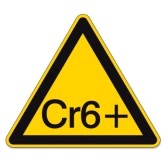California Proposes Nation’s First Drinking Water Standard for Hexavalent Chromium

Date: 8/22/2013
Number: 13-037
Contact: Anita Gore, Heather Bourbeau (916) 440-7259
Sacramento
The California Department of Public Health (CDPH) announced today it has submitted a first-in-the-nation drinking water standard for hexavalent chromium (chromium-6) to the Office of Administrative Law (OAL). Public comment begins Friday, August 23, when the proposal is published on the OAL website.
“California is the first and only state in the nation to establish a maximum contaminant level specifically for chromium-6 in drinking water,” said Dr. Ron Chapman, CDPH director and public health officer. “Establishing this new MCL underscores California’s commitment to safe drinking water standards to protect the public health.”
The proposed regulations set the maximum contaminant level (MCL) for chromium-6 in drinking water at 10 parts per billion (ppb) and specifically regulate the hexavalent form of chromium. This is five times less than the current total chromium standard of 50 ppb, which includes both trivalent chromium (chromium-3) and chromium-6. The federal MCL for total chromium is 100 ppb. Chromium-3 is harmless and actually a required nutrient, while chromium-6 may pose a risk of cancer when ingested.
In 2001, California adopted the first-in-the-nation law requiring a MCL for chromium-6. State law requires that a public health goal be established before a MCL may be set – and that the MCL be set as close to the public health goal as economically and technologically feasible. The public health goal was announced in July 2011.
The department has performed a series of rigorous analyses that considered, among other things: the occurrence of chromium-6 in drinking water sources statewide; the methods, feasibility and costs of detection; treatment and monitoring technology; and the relative health benefit that could be obtained at various MCL levels. The department also engaged public and private stakeholders, including public water systems and commercial laboratories. Capital investments needed along with the ongoing costs of operations and maintenance are estimated to be $156 million annually for public water systems to comply with this new standard.
The posting of the regulations on Friday by the OAL begins the public discussion process. The proposed regulations will be available today on the department’s website and will be posted tomorrow on the OAL website. Written comments are encouraged and will be accepted starting Friday at noon. The department will also hold meetings to receive public comment. The final MCL will be adopted following the public review and comment process. Once final, the department will review the chromium-6 MCL at least every five years after its adoption. As technology improves, the standard may be changed.